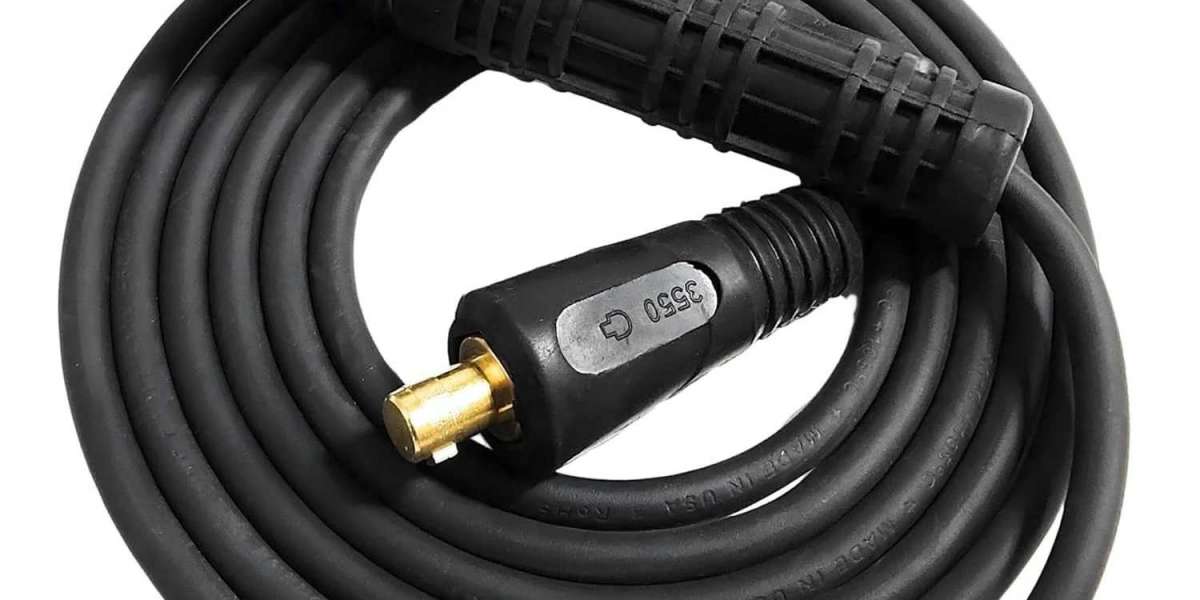In the world of welding, having the right equipment is essential for getting the job done safely and efficiently. One often overlooked yet crucial component is the welding cable. These cables play a vital role in delivering power from the welding machine to the welding tool, ensuring smooth and consistent welds. If you're a welder in Canada looking for the best welding cables, you've come to the right place. In this comprehensive guide, we'll explore everything you need to know about welding cables in Canada, including their importance, types, features, and where to find the best ones from Mapleweld.
Importance of Quality Welding Cables
Welding cables are the lifeline of any welding operation. They transmit electrical current from the welding machine to the welding tool, creating the arc necessary for welding. Using subpar or damaged welding cables can lead to poor weld quality, electrical hazards, and even equipment damage. Therefore, investing in quality welding cables is essential for safety, efficiency, and weld performance.
Types of Welding Cables
Copper Welding Cables: Copper is the most common material used for welding cables due to its excellent conductivity and flexibility. Copper welding cables come in various gauges, with thicker cables being suitable for higher current applications.
Aluminum Welding Cables: While less common than copper, aluminum welding cables offer good conductivity and are lightweight. However, they are not as flexible as copper cables and may require larger diameters to carry the same current.
Multi-Conductor Cables: These cables contain multiple conductors within a single jacket, allowing for more efficient cable management and reduced clutter in the welding workspace.
Heavy-Duty Welding Cables: Designed for industrial and heavy-duty applications, these cables feature thicker insulation and more robust construction to withstand harsh environments and high currents.
Features to Consider When Choosing Welding Cables
Conductor Size: The size of the conductor (measured in AWG) determines the cable's current-carrying capacity. Choose a cable with a conductor size appropriate for your welding machine's amperage output.
Flexibility: Flexible welding cables are easier to maneuver and less prone to kinking, improving overall efficiency and reducing operator fatigue.
Insulation Material: High-quality insulation materials, such as rubber or PVC, All products provide protection against abrasion, oil, and sunlight exposure, prolonging the lifespan of the cable.
Voltage Rating: Ensure that the welding cable's voltage rating matches or exceeds the voltage output of your welding machine to prevent electrical hazards.
Length: Choose a welding cable length that suits your workspace and allows for flexibility in positioning the welding machine and tool.
Mapleweld's Top Picks for Welding Cables in Canada
Mapleweld Heavy-Duty Copper Welding Cable: Made from high-quality copper conductors and durable insulation materials, Mapleweld's heavy-duty welding cables are designed to withstand the rigors of industrial welding applications. Available in various lengths and gauges, these cables offer superior conductivity, flexibility, and reliability.
Mapleweld Multi-Conductor Welding Cable: For those looking for efficient cable management and reduced clutter in their workspace, Mapleweld's multi-conductor welding cables are the perfect solution. With multiple conductors within a single jacket, these cables provide reliable performance and ease of use, making them ideal for professional welders.
Mapleweld Aluminum Welding Cable: Mapleweld's aluminum welding cables are lightweight yet durable, offering excellent conductivity and flexibility for a wide range of welding applications. With their high-quality construction and reliability, these cables are a cost-effective choice for welders in Canada.
Tips for Maintaining Welding Cables
Inspect Regularly: Check welding cables for signs of wear, damage, or corrosion, and replace any damaged cables immediately to prevent electrical hazards.
Keep Clean and Dry: Keep welding cables clean and dry to prevent contamination and ensure optimal conductivity. Avoid exposing cables to oil, grease, or moisture, as these can degrade the insulation and compromise performance.
Proper Storage: Store welding cables in a dry, clean environment away from heat sources, sunlight, and sharp objects. Coil cables properly to prevent kinks and tangles that can damage the insulation.
Avoid Overloading: Do not exceed the current-carrying capacity of welding cables to prevent overheating and potential damage to the cables and welding equipment.
Conclusion
welding cables are an essential component of any welding operation, providing the necessary power and connectivity for creating strong and reliable welds. When choosing welding cables in Canada, it's essential to consider factors such as conductor size, flexibility, insulation material, and voltage rating to ensure safety and performance. Mapleweld offers a wide selection of high-quality welding cables designed to meet the needs of professional welders in Canada. With their durability, reliability, and performance, Mapleweld's welding cables are the perfect choice for your welding projects.



